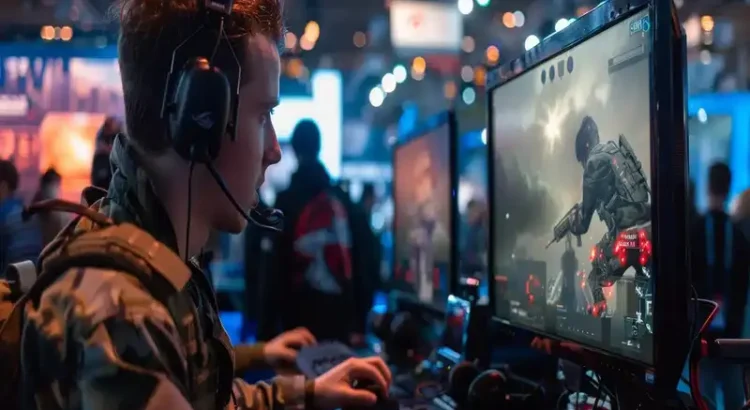Tech by Android – The mobile gaming revolution with cross-platform integration is transforming how people play and connect. Games are no longer tied to a single device. Players can now start a game on their smartphone, continue on a tablet, and finish on a console or PC. This seamless transition increases accessibility and keeps engagement high. Developers create ecosystems where data syncs across all devices. Progress is saved in real time, and multiplayer functions work regardless of platform. As a result, mobile games evolve into complex, community-driven experiences. This shift enhances not just gameplay but also social interaction, monetization, and innovation across the gaming industry.
“Read More: Justin Bieber admits he looks like a fraudster: Public Concerns about Bieber”
Unified Game Progression Across All Player Devices
Cross-platform integration allows players to carry progress between devices effortlessly. For example, someone can begin a quest on their mobile phone during a commute. Once home, they can continue the same quest on a console or desktop. This functionality removes the limits of traditional platform-specific gaming. Moreover, cloud saving ensures data stays current and secure. Game developers design UI and mechanics that adjust automatically to screen size. Even controls shift between touch, keyboard, and controller inputs. As a result, the experience feels native no matter where the player logs in. This convenience increases playtime and builds long-term engagement.
Multiplayer Communities Expand Across All Ecosystems
In the past, gamers were restricted by platform-specific communities. Today, integration across mobile, console, and PC unites these separate ecosystems. Friends using different hardware can now team up in real time. Competitive gaming becomes more inclusive and accessible. Chat features, guild systems, and friend lists sync across platforms. Moreover, matchmaking engines balance games fairly, regardless of input type. This creates a level playing field while expanding player networks. Developers also launch unified leaderboards and rewards to encourage ongoing collaboration. These tools promote community growth across age groups and regions. As a result, games evolve into larger, more social experiences.
“Read About: Upcoming Android Gaming Trends to Watch Out For”
Cloud Gaming Drives Seamless Cross-Device Performance
Cloud gaming plays a key role in making integration possible. Games are streamed rather than downloaded, reducing the need for powerful local hardware. This technology allows players on low-end phones to access high-quality games. Internet speed now defines performance more than device specs. Cloud-based platforms also update games in real time without user intervention. Players benefit from immediate access to new content, patches, and events. Furthermore, cloud syncing ensures zero interruption in progression. If a connection drops, the game picks up right where it left off. These advantages redefine expectations for mobile gaming performance and reliability.
Touch Controls and UI Evolve for Cross-Platform Use
As games move between devices, user interfaces must adapt smoothly. Developers invest heavily in designing modular UI layouts. These interfaces respond to different screen sizes and orientations. For example, HUD elements shrink or expand to stay functional on phones, tablets, and PCs. Touch controls also become more intuitive with gestures, haptics, and customizable layouts. On larger devices, traditional input methods like controllers or keyboards activate automatically. Some games offer hybrid controls for mixed environments. This flexibility ensures consistent user experience across all formats. Gamers no longer feel limited by control schemes. As a result, comfort and immersion improve significantly.
Monetization Systems Adjust for Platform Flexibility
Revenue models adapt to the new cross-platform world. In-app purchases now reflect account-based ownership instead of device-based transactions. Players can buy a cosmetic item on mobile and use it instantly on console or desktop. This eliminates duplicate spending and builds consumer trust. Subscription models also gain traction. Services like Game Pass and Apple Arcade offer multi-platform access for one fee. Meanwhile, ad placements become smarter, adapting to screen size and usage patterns. Developers track purchases and engagement through unified dashboards. These tools allow better targeting and pricing strategies. As a result, monetization becomes more efficient and user-friendly.
Security Protocols Strengthen Player Account Protection
With cross-platform data syncing, security takes on a bigger role. Developers implement robust authentication systems, including two-factor verification. Single sign-on through trusted platforms like Google, Apple, or Facebook reduces password fatigue. End-to-end encryption safeguards gameplay and purchase history. Regular audits and patches protect against evolving threats. Additionally, cloud services provide automatic data backups to prevent loss during device transitions. Developers also build in parental controls and reporting tools for safer environments. These features protect user identity and ensure fair play. As gaming becomes more connected, maintaining trust and safety is critical to long-term success.
Indie Developers Thrive Through Cross-Platform Reach
Independent developers benefit significantly from cross-platform integration. With fewer technical limitations, small teams can release games to larger audiences. Engine tools like Unity and Unreal simplify multi-platform development. These tools allow one codebase to support multiple device types. Additionally, app stores and digital marketplaces now promote cross-platform titles more visibly. Indie games gain viral momentum faster due to social sharing between platforms. Community features, such as cross-platform leaderboards and forums, help boost retention. Many indie developers also use crowd-based testing to improve balance across devices. These advantages make it easier for new voices to compete with big studios.
Esports and Tournaments Reach New Demographics
Cross-platform gaming opens competitive play to a wider audience. Esports tournaments now welcome participants from mobile, console, and PC in the same bracket. This inclusivity broadens the player pool and raises viewership numbers. Organizers use universal scoring systems and enforce fair input standards. Commentators and spectators benefit from cloud-based replay tools and synchronized data feeds. Moreover, mobile players can compete on equal footing with others using adaptive matchmaking. Sponsorship opportunities also grow as brand visibility spreads across devices. These shifts redefine what competitive gaming looks like and who gets to participate. Esports becomes more dynamic and accessible as a result.
Real-Time Updates Synchronize Gameplay Worldwide
Developers push live updates to all platforms simultaneously. Cross-platform syncing ensures that game worlds remain consistent for everyone. A new weapon, event, or feature appears instantly for all players, regardless of device. This real-time rollout keeps excitement high and levels the playing field. Live service games benefit the most, as seasonal content drives ongoing engagement. Players can plan their in-game strategy around reliable update schedules. Synchronization also improves bug fixing and balancing. Developers release patches across ecosystems without waiting for individual approvals. This speed benefits both creators and users. Game lifecycles become more agile and responsive to community feedback.
Future Integration Expands into Wearables and Smart TVs
Looking forward, cross-platform gaming will move beyond phones and PCs. Developers already experiment with wearables, AR glasses, and smart TVs. These new platforms offer casual yet immersive gaming possibilities. For instance, a smartwatch can deliver mini-games tied to a larger console title. Meanwhile, AR glasses may overlay mission updates during a walk. Voice-controlled smart TVs provide low-friction entry points for non-gamers. Integration between all these devices will deepen the gaming ecosystem further. Developers create connected universes where progress moves fluidly across every screen. As more smart devices join the network, mobile gaming enters a new era of creativity and scale.



